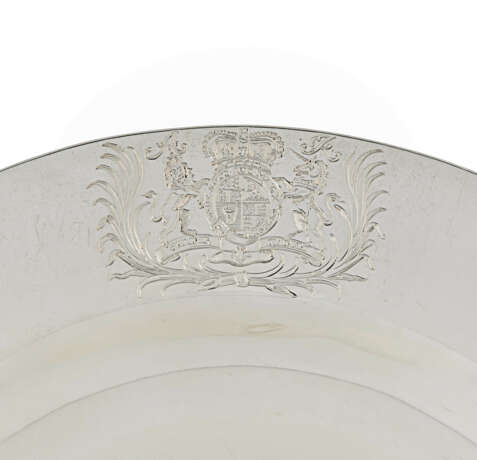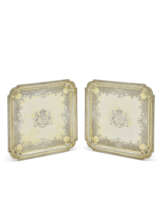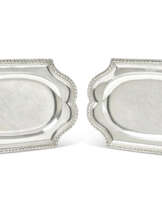ID 1027668
Lot 358 | A SET OF TWELVE GEORGE I SILVER DINNER PLATES
Estimate value
$ 50 000 – 80 000
MARK OF DAVID WILLAUME, LONDON, 1725, BRITANNIA STANDARD
Each plain circular, engraved on the border with the Royal arms and a crest, marked on undersides and engraved with scratch weights
9 7/8 in. (25 cm.) diameter
225 gr. 4 dwt. (7006 gr.)
Provenance
Captain William Smith (d.1773), son of John Smith (1655-1723), Speaker of the House of Commons, by descent to his nephew,
Thomas Assheton Smith (1725-1774), who assumed the additional name of Smith in 1774 following the death of his maternal uncle, William Smith in 1773, by descent, father to son, until his grandson's widow, who left the Welsh estates to her husband's great-nephew on her death in 1858,
George William Duff-Assheton-Smith (1848-1904), by descent to his great nephew,
Sir Michael Duff, 3rd Bt. (1907-1980), of Vaynol, Caernarfonshire, sold,
Sir Michael Duff, Bt.; Christie's, London, 10 December 1958, lot 117, 118, 120-123.
With S.J. Philips, London.
With Mrs. Filomena 'Fay' Plohn (1924-2009) of New York, sold,
The Plohn collection; Sotheby's, London, 15 October 1970, lot 26.
The Collection of the Rothschild family.
By descent to the present owners.
| Artist: | David Willaume II (1693 - 1761) |
|---|---|
| Applied technique: | Metalwork |
| Medium: | Silver |
| Place of origin: | Northern Europe, Europe, United Kingdom |
| Auction house category: | All other types of objects, Plates & Dishes |
| Artist: | David Willaume II (1693 - 1761) |
|---|---|
| Applied technique: | Metalwork |
| Medium: | Silver |
| Place of origin: | Northern Europe, Europe, United Kingdom |
| Auction house category: | All other types of objects, Plates & Dishes |
| Address of auction |
CHRISTIE'S 20 Rockefeller Plaza 10020 New York USA | ||||||||||||||
|---|---|---|---|---|---|---|---|---|---|---|---|---|---|---|---|
| Preview |
| ||||||||||||||
| Phone | +1 212 636 2000 | ||||||||||||||
| Fax | +1 212 636 4930 | ||||||||||||||
| Conditions of purchase | Conditions of purchase | ||||||||||||||
| Shipping |
Postal service Courier service pickup by yourself | ||||||||||||||
| Payment methods |
Wire Transfer | ||||||||||||||
| Business hours | Business hours
|










